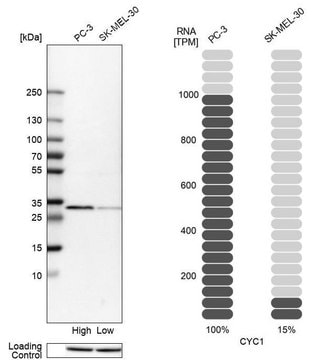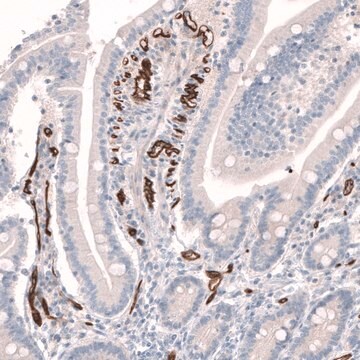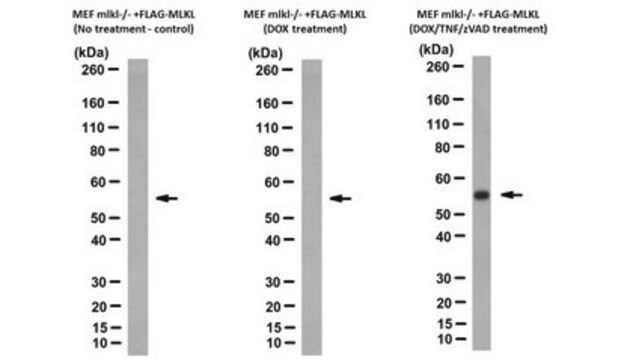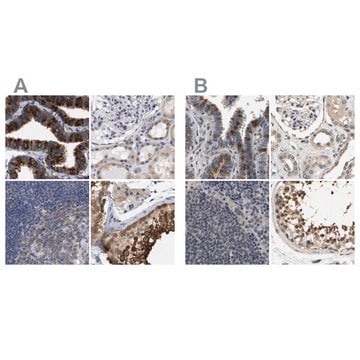SAB4200194
Anti-Pontin antibody, Mouse monoclonal
clone 5G3-11, purified from hybridoma cell culture
Synonym(s):
Anti-49 kDa TATA box-binding protein-interacting protein, Anti-49 kDa TBP-interacting protein, Anti-54 kDa erythrocyte cytosolic protein, Anti-ECP-54, Anti-INO80 complex subunit H, Anti-NMP 238, Anti-Pontin52, Anti-RUVBL1, Anti-RVB1, Anti-RuvB (e coli homolog)-like 1, Anti-RuvB-like 1, Anti-TAP54-alpha, Anti-TIH1, Anti-TIP49, Anti-TIP49A, Anti-TIP60-associated protein 54-alpha, Anti-nuclear matrix protein 238
About This Item
Recommended Products
biological source
mouse
conjugate
unconjugated
antibody form
purified from hybridoma cell culture
antibody product type
primary antibodies
clone
5G3-11, monoclonal
form
buffered aqueous solution
mol wt
~50 kDa
species reactivity
canine, human, monkey
technique(s)
immunohistochemistry: suitable
immunoprecipitation (IP): suitable
indirect immunofluorescence: suitable
western blot: 1:1,000-1:2,000 using whole extracts of human HEK-293T or MCF-7 cells
isotype
IgG
UniProt accession no.
shipped in
dry ice
storage temp.
−20°C
target post-translational modification
unmodified
Gene Information
human ... RUVBL1(8607)
General description
Immunogen
Application
- western blotting
- immunoprecipitation
- ChIP-sequencing
- immunohistochemistry
- immunofluorescence
- RNA immunoprecipitation
Biochem/physiol Actions
Physical form
Disclaimer
Not finding the right product?
Try our Product Selector Tool.
Storage Class Code
10 - Combustible liquids
Flash Point(F)
Not applicable
Flash Point(C)
Not applicable
Certificates of Analysis (COA)
Search for Certificates of Analysis (COA) by entering the products Lot/Batch Number. Lot and Batch Numbers can be found on a product’s label following the words ‘Lot’ or ‘Batch’.
Already Own This Product?
Find documentation for the products that you have recently purchased in the Document Library.
Our team of scientists has experience in all areas of research including Life Science, Material Science, Chemical Synthesis, Chromatography, Analytical and many others.
Contact Technical Service








